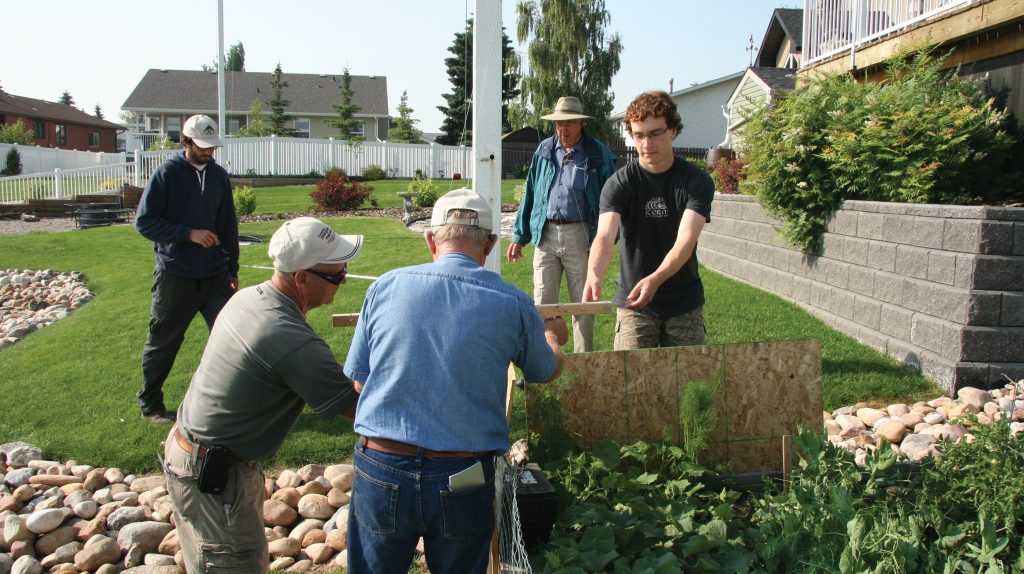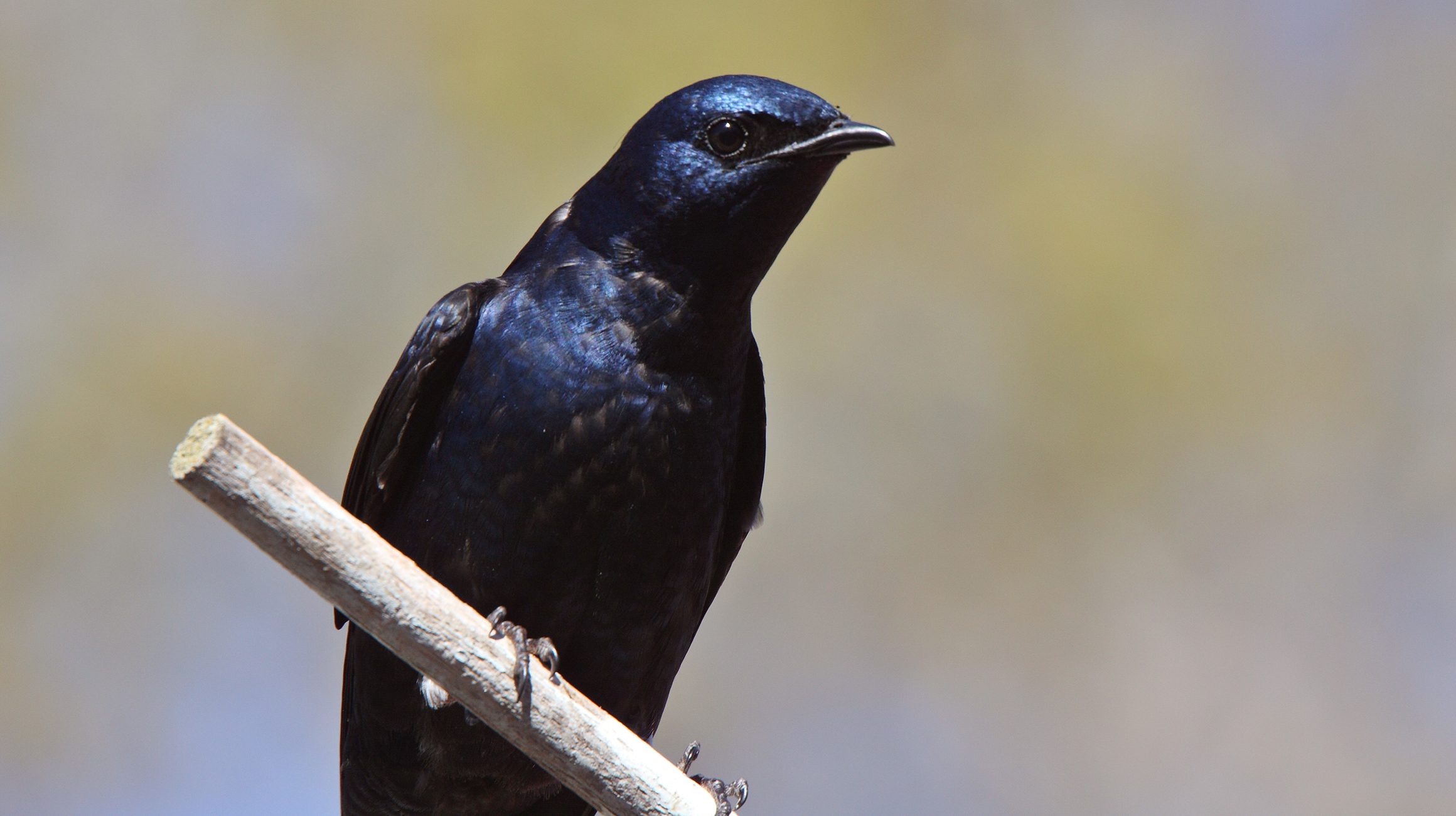Purple Martin populations in most of North America have undergone a steady decline in the past few decades. Since most Purple Martins depend on human-provided boxes for nesting, recruitment and retention of highly motivated nest box “landlords” is vital for the birds’ nesting success. Therefore, researchers at the University of Alberta-Augustana, in collaboration with staff at the Camrose Wildlife Stewardship Society and City of Camrose, conducted a variety of human dimensions studies to better understand the needs and motivations of Purple Martin landlords in order to better engage and retain high quality landlords. Over several years, project personnel interviewed landlords, visitors to the annual Purple Martin Festival, and citizen scientists supporting a research project on martin migration. The interview questions focused on motivations and benefits from their martin-related activities.

“Landlords” help establish Purple Martin houses · photo courtesy of Glen Hvenegaard
Research Insights
- Landlord motivations centered around helping the environment, social belonging, and learning.
- Evaluating an annual Purple Martin Festival showed that this event provided a venue for marketing, support, and education among landlords, along with building support in the community.
- Citizens monitoring of nests generated conservation benefits for Purple Martins as well as social and educational benefits for participants.
Outcomes
This research enabled practitioners to craft messages and offer activities to attract and retain landlords based on their motivations and expected benefits, either to themselves or for the benefit of the martin population. As a result, the number of participating landlords has risen, the level of commitment to martin nest box management has increased, and the community has become more supportive of martin conservation. Further, the increased level of nest stewardship efforts by landlords helped to raise the local Purple Martin population from 8 pairs in 2003 to 84 pairs in 2016 (with a high of 173 pairs in 2009).
Learn more about this study at aug.ualberta.ca/glen.hvenegaard or contact Glen Hvenegaard: gth@ualberta.ca.

